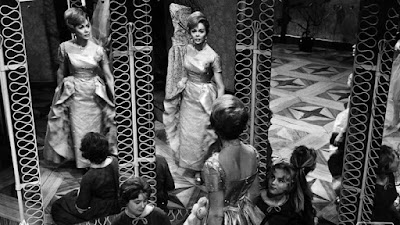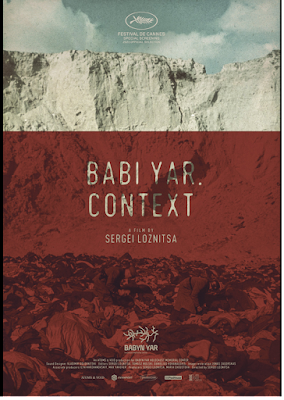 |
| Mikko Niskanen: Kahdeksan surmanluotia / Eight Deadly Shots (FI 1972) with Tarja-Tuulikki Tarsala and Mikko Niskanen. |
 |
| Introducing Eight Deadly Shots at Cinema Jolly, 27 June 2022: Anna von Bagh and Cecilia Cenciarelli. To the left: AA, Satu Kyösola, Liselott Forsman, Mark Lwoff. Foto Max Borg. |
 |
| Introducing Eight Deadly Shots at Cinema Jolly, 27 June 2022: Antti Alanen and Cecilia Cenciarelli. To the left: Liselott Forsman, Anna von Bagh, Satu Kyösola, Mark Lwoff. Foto Max Borg. |
FI 1972. D+Scen.: Mikko Niskanen. F.: Mikko Niskanen, Juhani Sarro, Seppo Immonen, Kimmo Simula, Juhani Voutilainen. M.: Jyrki Rapp. Scgf.: Jorma Lindfors. Mus.: Erkki Ertappa. Int.: Mikko Niskanen (Pasi), Tarja-Tuulikki Tarsala (Vaimo), Tauno Paananen (Tanu), Paavo Pentikäinen (Reiska), Elina Liimatainen (Ellu), Ari Vainiontaus (Ari), Mauno Argillander (Manu), Sulo Hokkanen (Sulo Kokki). Prod.: Mikko Niskanen per YLE. 35 mm. Bn
5 hrs 16 min
Restored by The Film Foundation’s World Cinema Project, Yleisradio Oy, Fiction Finland ry e Cineteca di Bologna at L’Immagine Ritrovata laboratory. Funding provided by the Hobson/Lucas Family Foundation. Additional funding provided by the Finnish Ministry of Education and Culture, Tiina and Antti Herlin Foundation, Jane and Aatos Erkko Foundation.
Il Cinema Ritrovato 2022: Cinemalibero.
Print from Yle (Finnish Broadcasting Company)
Introducono Antti Alanen (National Audiovisual Institute Finland) e Anna von Bagh - and Cecilia Cenciarelli and Liselott Forsman.
Viewed at Cinema Jolly, Bologna, 27 June 2022
" Kahdeksan surmanluotia was originally broadcast in Finland as a four-part television series. The late film historian and filmmaker Peter von Bagh was a tireless advocate for this film’s restoration, which has inspired an entire generation of filmmakers, including Aki Kaurismaki. In order to honour Peter’s legacy and his wish to respect the specific aesthetic of the film, after different workflows were taken into consideration and several tests were performed it was eventually decided to opt for a combination of digital and analogue workflows. The 4K scan and restoration of the original 16 mm (A&B) was followed by a film-out onto a fine grain from which a new 35 mm was struck. The restoration, completed after almost three years, produced a new 35 mm internegative. "
Peter von Bagh: "Relatively little is known of Mikko Niskanen (1929-90), whose output of 14 features is highly uneven. The first three were about war, the following three about youth, and then came Kahdeksan surmanluotia, a 316-minute film made for television based on a 1969 news item about the killing of four policemen by farmer Tauno Pasanen. In Finland, the general public and film specialists agree that it is their national cinema’s masterpiece. It is compared by some to the work of Béla Tarr, while others, more classica ly, maintain that it is what the full nine hours of Greed might have been like."
"After finishing his sixth (and failed) feature, Niskanen had reached burnout. In his words, Pasanen’s story “energised my lifeless consciousness… The gunshots were an end to a long and logical chain of events… I didn’t choose this task, the task chose me.”
"This was the starting point for a shattering closeup of poverty, and of a man up against the wall, at the most basic level. Religion, education, morality, and sundry spiritual peculiarities of rural Finland’s social order exert a crushing force and also deal the hand that Niskanen’s protagonist, Pasi, has to play: one man becomes a policeman who defends the ideals of family, church, and property; another becomes a poor cottager. Both are given guns, both are victims. Niskanen doesn’t resort to false romanticism or the clichés of humanist cinema, nor does he appeal to pity, which would be to position himself at a remove from the material. The film concentrates strictly on the familiar elements of everyday life, yet seems to float in a strange realm of unknown dimensions, at once psychological, hallucinatory, and concrete, abounding in observations with a sharp and sometimes merciless anthropological edge. Surely this is an instance of cinema replicating the techniques of 19th-century French literature, as observed by Olaf Möller who described Kahdeksan surmanluotia as “Zola-esque”. The main character picks up his gun and is clearly responsible for his actions, but the specific case Niskanen depicts nevertheless has a kind of universal relevance, concrete and humane, combining the psychological, biological, and social facts into a clenched fist. The fatal shots are part of a chain of societal circumstances that can’t simply be reduced to a ‘crime’. " Peter von Bagh, The Four Seasons of Drinking, “Encore”, 2012
ANTTI ALANEN: INTRODUCTION: EIGHT BULLET POINTS
ONE: We know Eight Deadly Shots as the favourite Finnish film of Peter von Bagh and Aki Kaurismäki.
TWO: Mikko Niskanen gives a great performance as an alcoholic – to be compared with James Mason in A Star Is Born, Albert Finney in Under the Volcano and Mads Mikkelsen in Another Round.
THREE: In Finland, Eight Deadly Shots was a national event. Even President Urho Kekkonen who did not care much about the cinema, asked to see it and gave a laudatory comment that helped promote the film. He had been born into such circumstances. These were his people.
FOUR: Eight Deadly Shots is an early instance of the phenomenon of a film-maker creating major work in the form of a television series. Mikko Niskanen did it before Ingmar Bergman directed Scenes from a Marriage, before Kieslowski’s Decalogue, Fassbinder’s Berlin Alexanderplatz and David Lynch’s Twin Peaks.
FIVE: Mikko Niskanen studied at the Finnish Theatre School in the 1940s, worked in the Finnish film industry in the 1950s and studied in Moscow for three years at the VGIK before debuting as a film director, at the same time as Tarkovsky, Shepitko and Shukshin. There are affinities in his work with neorealism, nouvelle vague, kitchen sink and direct cinema. But also with Vasili Shukshin, also an actor, writer and director. The call of the earth and the forest. The pain in the heart when atavistic tradition gives way to modernity. Something vital being lost forever.
SIX: In the 1950s most people in Finland still lived in the countryside. There were more horses than cars. The urbanization and the modernization was brutal and shocking. There was a big move to cities and Sweden. There was also a regional divide like in Italy between Mezzogiorno and the North. In Finland, the countryside was affluent in the south and the west. In the north and the northeast it was like in Eight Deadly Shots.
SEVEN: The great universal theme of the film is being out of time, obsolete. What happens when the world we knew suddenly vanishes. It is also a seismic blow to masculinity. The father is no longer able to sustain his family and loses respect and self-respect.
EIGHT: Eight Deadly Shots has always been popular with the audience and the critics. A short cinema version was edited, but while there is never a dull moment in the long version, the short version is dull all the way. The long version is available in telecasts, video, dvd and online, but previous transfers have failed to convey the bite and the edge of the cinematography.
At the Finnish Film Archive we used to screen in our cinema the original 16 mm print with a separate magnetic strip, but the Finnish Broadcasting Corporation no longer lets use it. For those who saw it, it was a revelation of the richness of the cinematography covering the four seasons of the countryside. The cinematography is both raw and subtle. The bite is powerful like that of a bear.
Why does it matter? It matters because in cases like this, form is substance. In scenes that are based on duration, the rich cinematography conveys the full intensity of the presence. It is not a formal distinction. It is about experiencing the full gravity of the work in a purely visual way.
Thanks to The Film Foundation’s World Cinema Project, Peter’s dream has come true and we can feel this strong bite on 35 mm for the first time.





.png)


